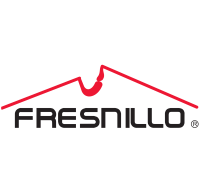
Batla Minerals SA
PAR:MLBAT

Profitability Summary
Batla Minerals SA's profitability score is hidden . We take all the information about a company's profitability (such as its margins, capital efficiency, free cash flow generating ability, and more) and consolidate it into one single number - the profitability score. The higher the profitability score, the more profitable the company is.
Profitability Score
We take all the information about a company's profitability (such as its margins, capital efficiency, free cash flow generating ability, and more) and consolidate it into one single number - the profitability score. The higher the profitability score, the more profitable the company is.
We take all the information about a company's profitability (such as its margins, capital efficiency, free cash flow generating ability, and more) and consolidate it into one single number - the profitability score. The higher the profitability score, the more profitable the company is.
Profitability Score
Margins
Profit margins represent what percentage of sales has turned into profits. Simply put, the percentage figure indicates how many cents of profit the company has generated for each dollar of sale.
Profit margins help investors assess if a company's management is generating enough profit from its sales and whether operating costs and overhead costs are being contained.
Earnings Waterfall
Batla Minerals SA

|
Revenue
|
3.8m
EUR
|
|
Cost of Revenue
|
-2.8m
EUR
|
|
Gross Profit
|
980k
EUR
|
|
Operating Expenses
|
-2.1m
EUR
|
|
Operating Income
|
-1.1m
EUR
|
|
Other Expenses
|
490k
EUR
|
|
Net Income
|
-610k
EUR
|
Margins Comparison
Batla Minerals SA Competitors

| Country | Company | Market Cap |
Gross Margin |
Operating Margin |
Net Margin |
||
|---|---|---|---|---|---|---|---|
| FR |

|
Batla Minerals SA
PAR:MLBAT
|
1.1m EUR |
26%
|
-29%
|
-16%
|
|
| ZA |
A
|
Anglo American Platinum Ltd
JSE:AMS
|
198B Zac |
17%
|
15%
|
6%
|
|
| ZA |
I
|
Impala Platinum Holdings Ltd
JSE:IMP
|
87.4B Zac |
5%
|
3%
|
-20%
|
|
| ZA |
S
|
Sibanye Stillwater Ltd
JSE:SSW
|
48.2B Zac |
6%
|
5%
|
-7%
|
|
| ZA |
N
|
Northam Platinum Holdings Ltd
JSE:NPH
|
45.4B Zac |
12%
|
12%
|
5%
|
|
| ZA |
R
|
Royal Bafokeng Platinum Ltd
JSE:RBP
|
36.7B Zac |
8%
|
7%
|
6%
|
|
| MX |

|
Fresnillo PLC
LSE:FRES
|
6.5B GBP |
36%
|
26%
|
4%
|
|
| MX |
I
|
Industrias Penoles SAB de CV
BMV:PE&OLES
|
139.4B MXN |
21%
|
11%
|
1%
|
|
| RU |
A
|
AK Alrosa PAO
MOEX:ALRS
|
342.3B RUB |
43%
|
28%
|
24%
|
|
| CY |
T
|
Tharisa PLC
JSE:THA
|
3.7B Zac |
26%
|
17%
|
11%
|
|
| GG |
G
|
Gemfields Group Ltd
JSE:GML
|
1.8B Zac |
37%
|
12%
|
-5%
|
Return on Capital
Return on capital ratios give a sense of how well a company is using its capital (equity, assets, capital employed, etc.) to generate profits (operating income, net income, etc.). In simple words, these ratios show how much income is generated for each dollar of capital invested.


Return on Capital Comparison
Batla Minerals SA Competitors

| Country | Company | Market Cap | ROE | ROA | ROCE | ROIC | ||
|---|---|---|---|---|---|---|---|---|
| FR |

|
Batla Minerals SA
PAR:MLBAT
|
1.1m EUR | N/A | N/A | N/A | N/A | |
| ZA |
A
|
Anglo American Platinum Ltd
JSE:AMS
|
198B Zac |
7%
|
4%
|
13%
|
9%
|
|
| ZA |
I
|
Impala Platinum Holdings Ltd
JSE:IMP
|
87.4B Zac |
-17%
|
-12%
|
2%
|
2%
|
|
| ZA |
S
|
Sibanye Stillwater Ltd
JSE:SSW
|
48.2B Zac |
-16%
|
-5%
|
5%
|
8%
|
|
| ZA |
N
|
Northam Platinum Holdings Ltd
JSE:NPH
|
45.4B Zac |
5%
|
3%
|
8%
|
5%
|
|
| ZA |
R
|
Royal Bafokeng Platinum Ltd
JSE:RBP
|
36.7B Zac |
3%
|
2%
|
3%
|
2%
|
|
| MX |

|
Fresnillo PLC
LSE:FRES
|
6.5B GBP |
4%
|
2%
|
17%
|
6%
|
|
| MX |
I
|
Industrias Penoles SAB de CV
BMV:PE&OLES
|
139.4B MXN |
2%
|
1%
|
8%
|
4%
|
|
| RU |
A
|
AK Alrosa PAO
MOEX:ALRS
|
342.3B RUB |
31%
|
21%
|
29%
|
25%
|
|
| CY |
T
|
Tharisa PLC
JSE:THA
|
3.7B Zac |
13%
|
8%
|
14%
|
10%
|
|
| GG |
G
|
Gemfields Group Ltd
JSE:GML
|
1.8B Zac |
-3%
|
-2%
|
5%
|
-8%
|
Free Cash Flow
Free cash flow (FCF) is the money a company has left over after paying its operating expenses and capital expenditures. The more free cash flow a company has, the more it can allocate to dividends, paying down debt, and growth opportunities.
If a company has a decreasing free cash flow, that is not necessarily bad if the company is investing in its growth.






















































 You don't have any saved screeners yet
You don't have any saved screeners yet
